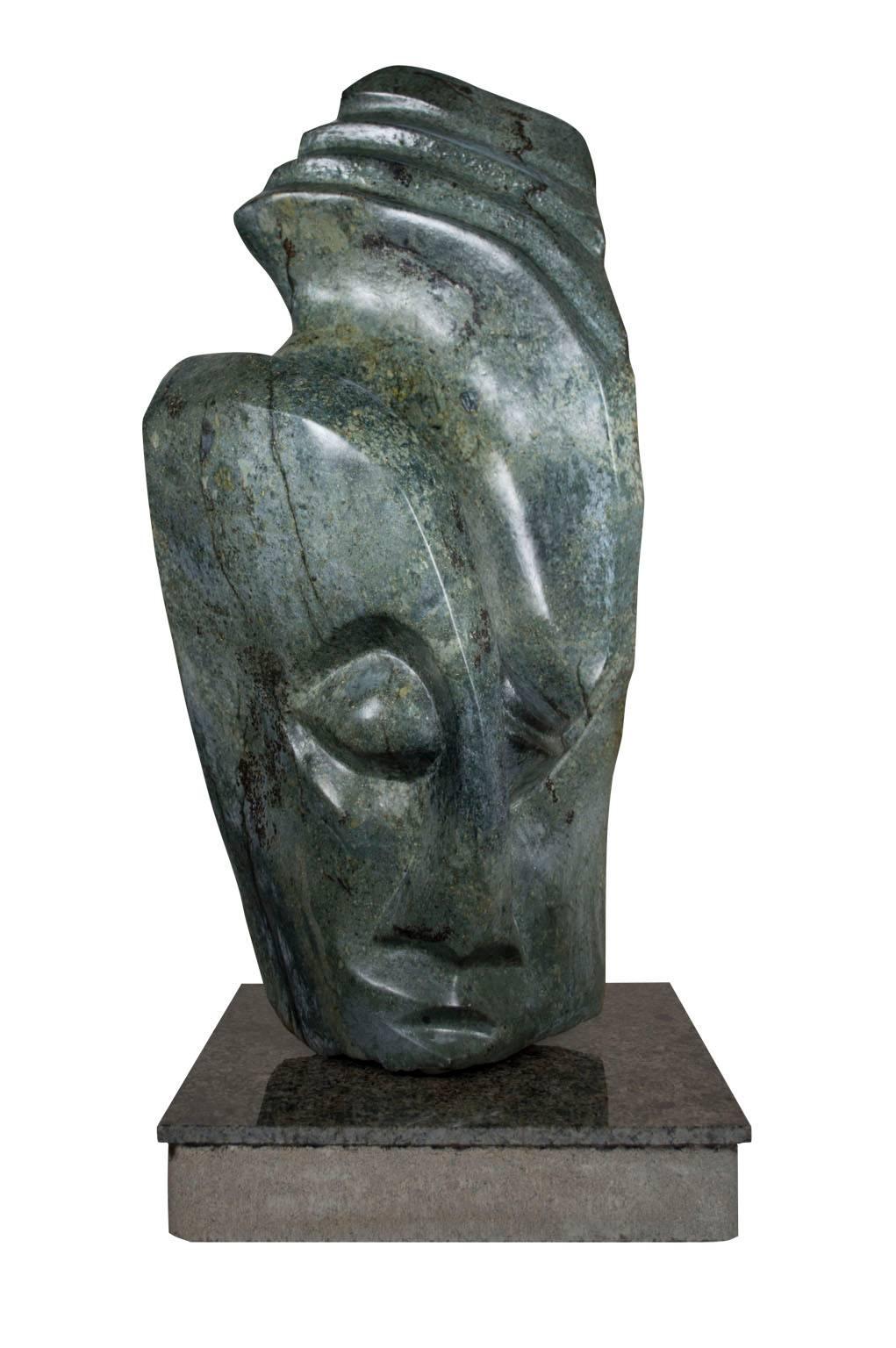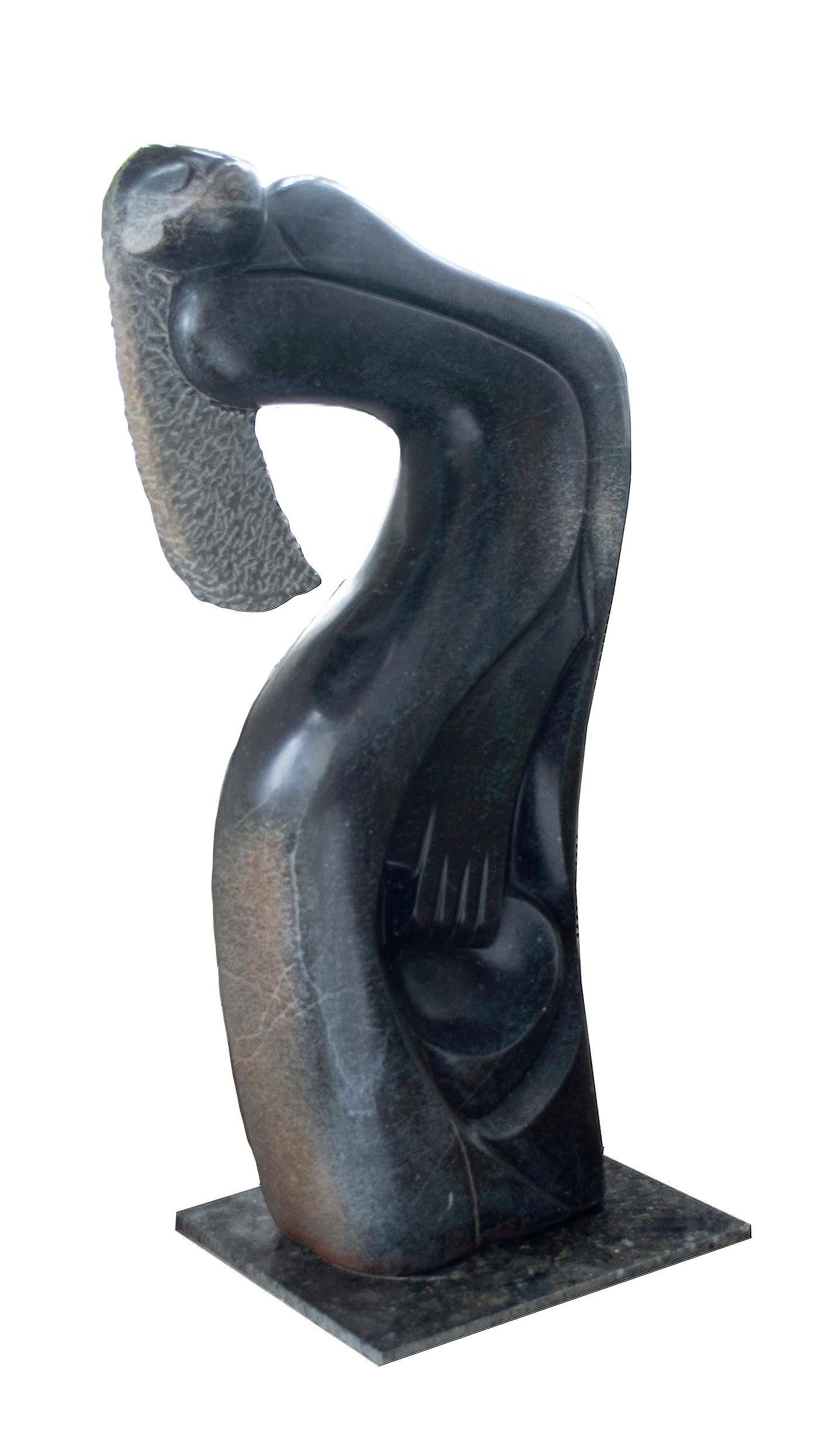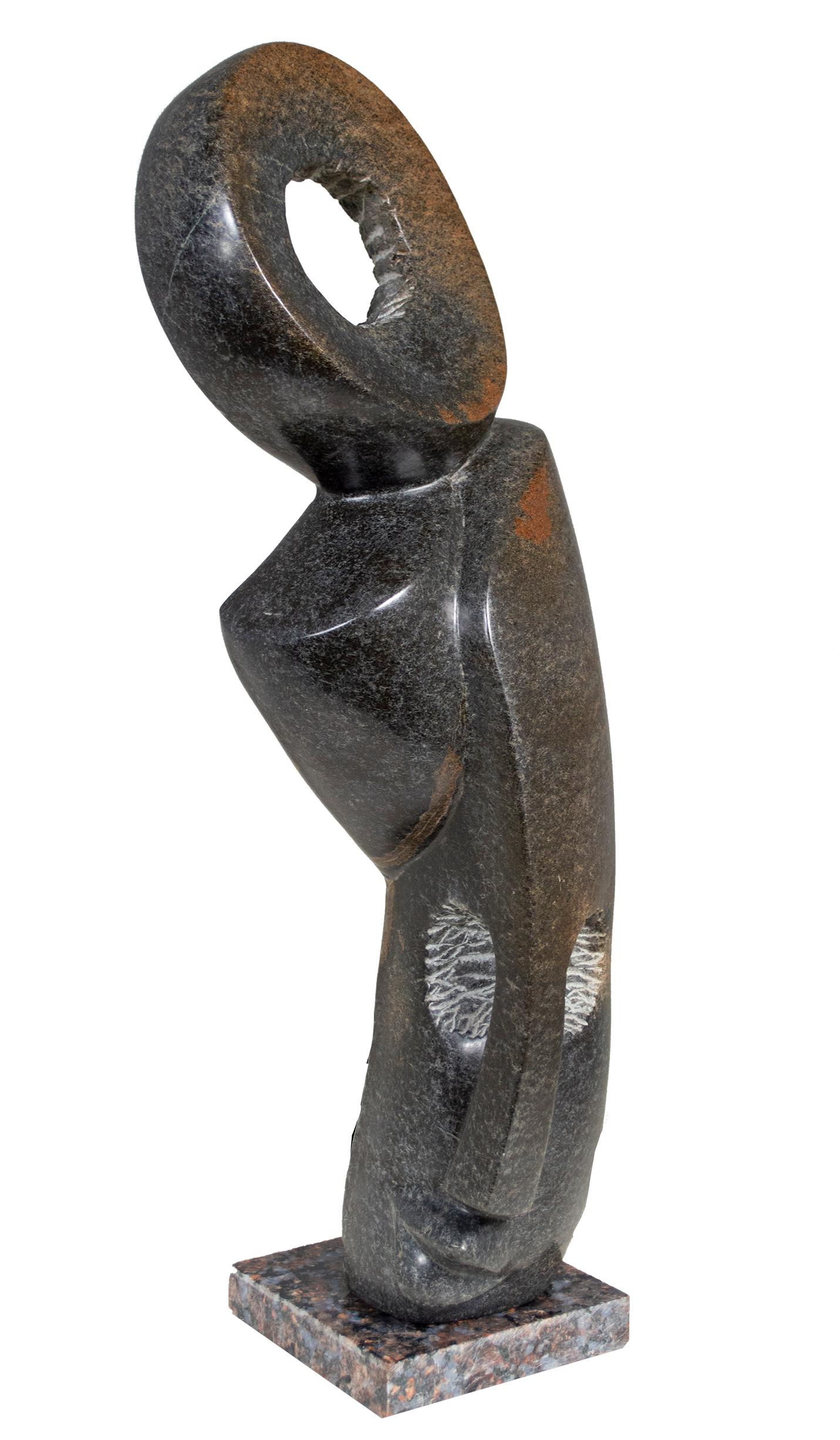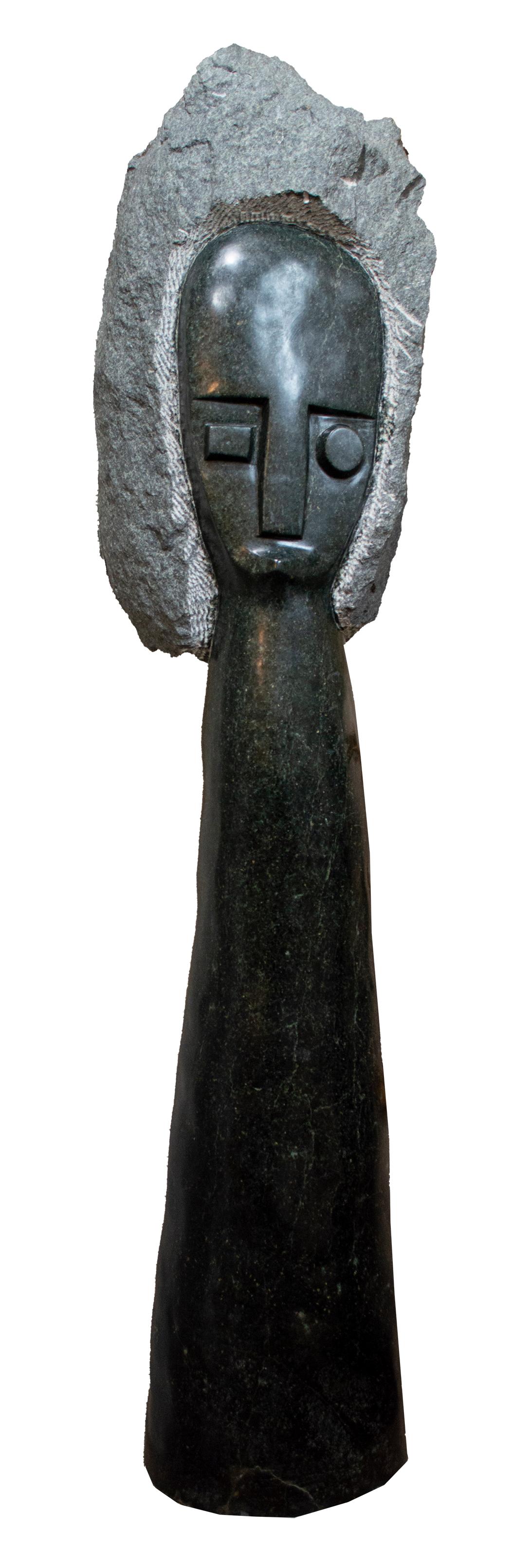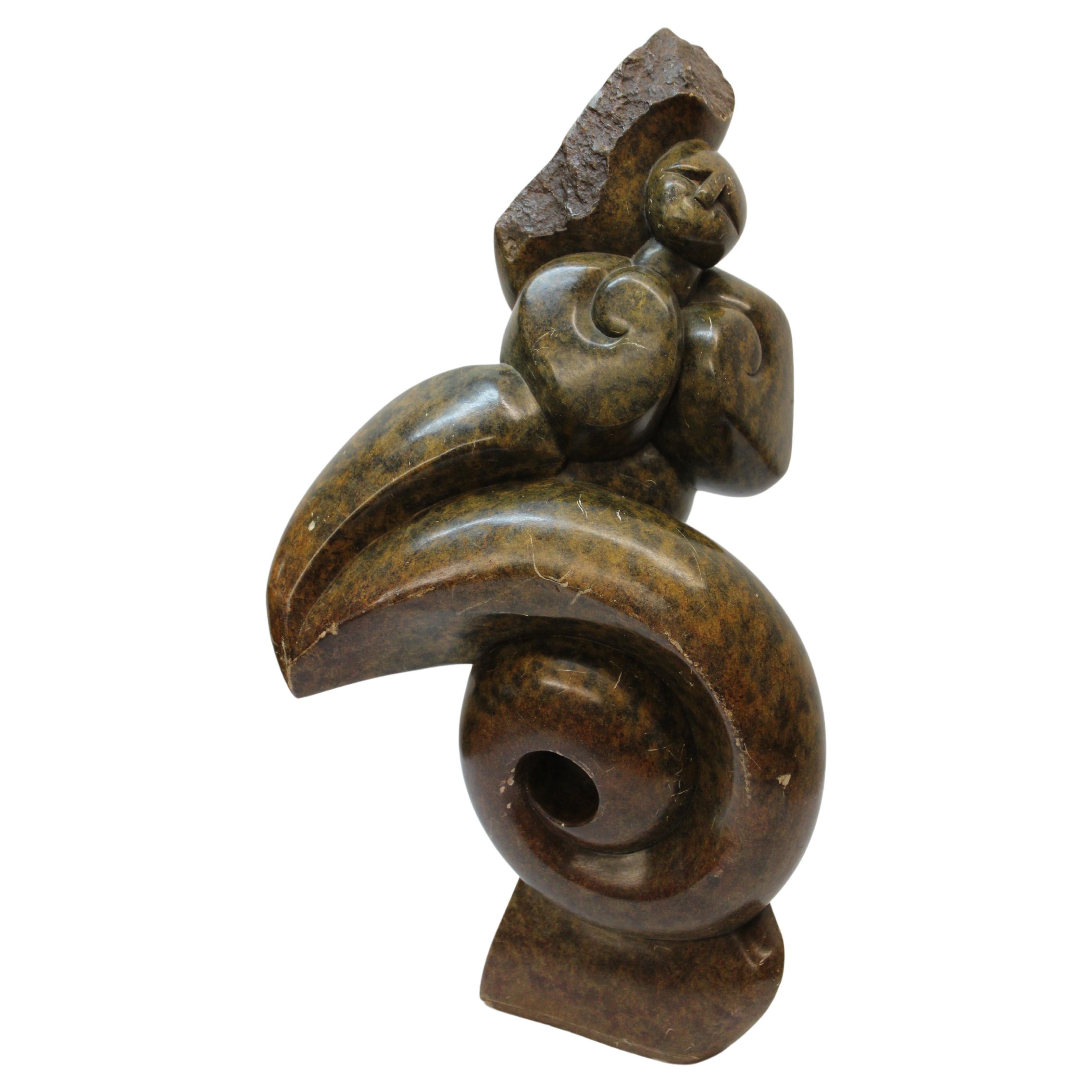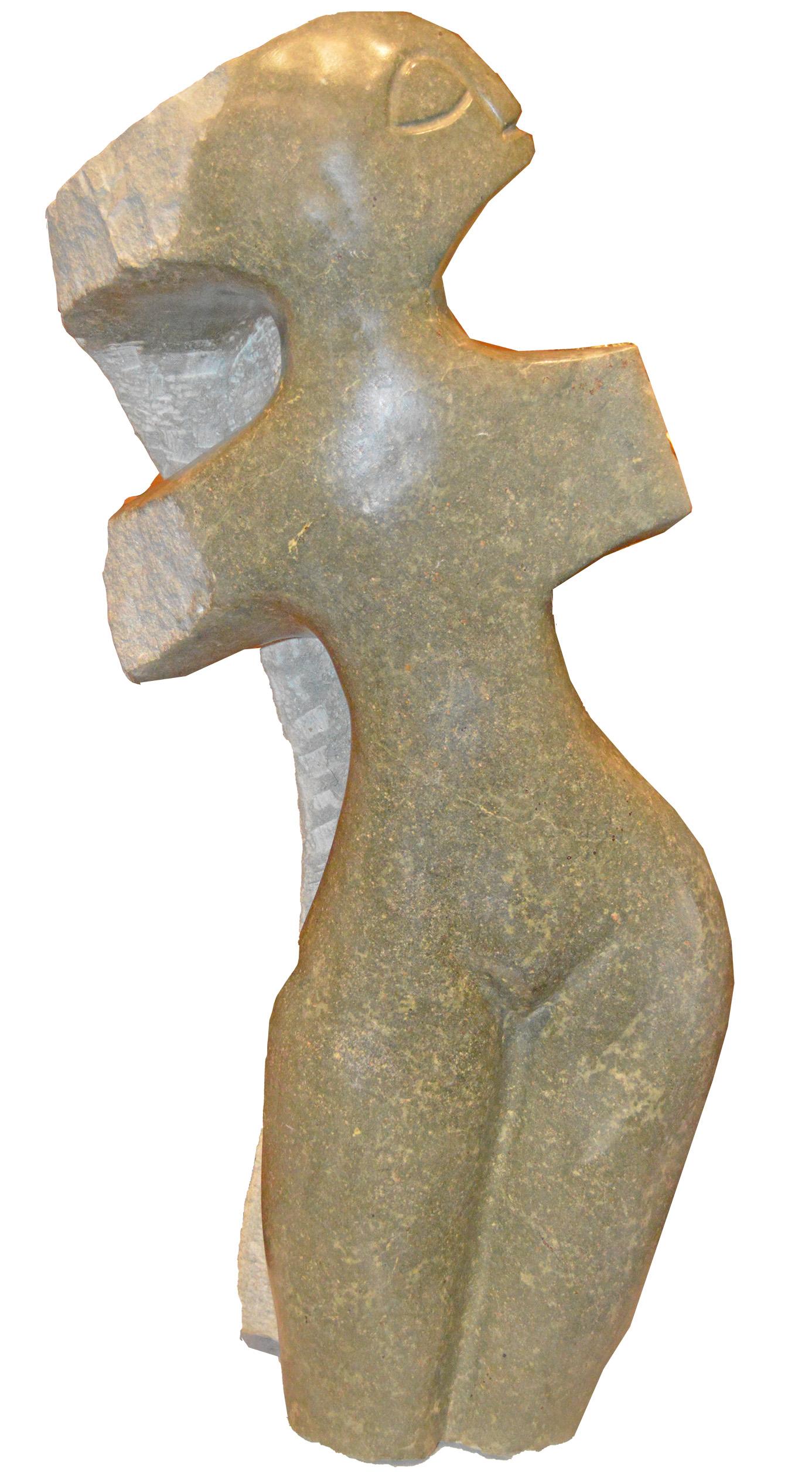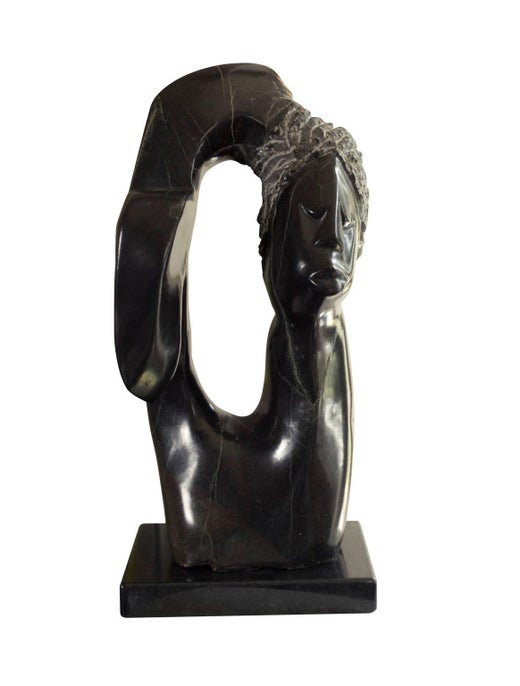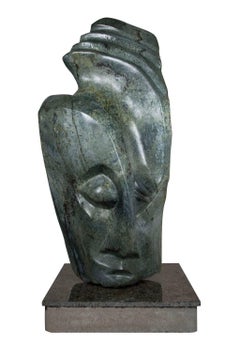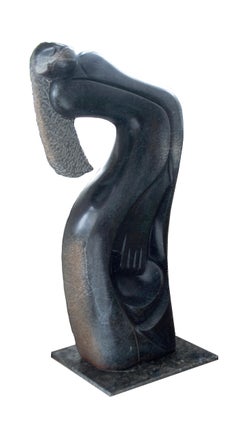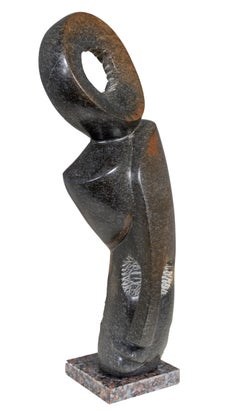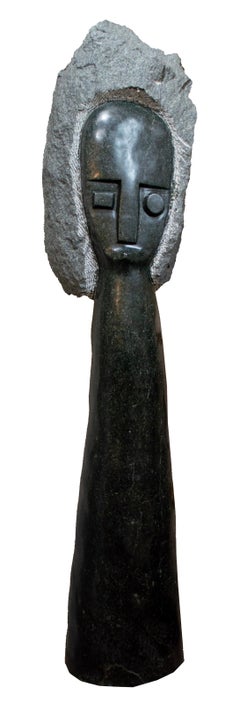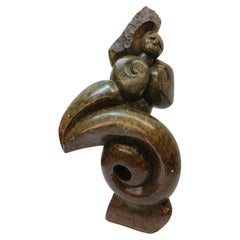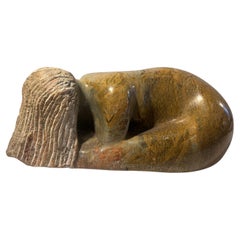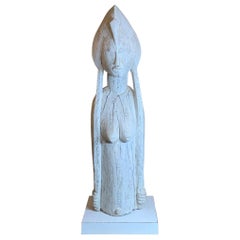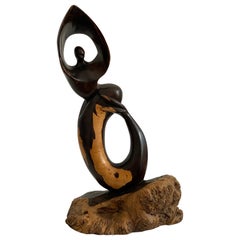Farai Darare"Mermaid, " Carved Springstone by Farai Darare2002
2002
About the Item
- Creator:Farai Darare (1980, Shona, Zimbabwean)
- Creation Year:2002
- Dimensions:Height: 16.75 in (42.55 cm)Width: 8 in (20.32 cm)Depth: 5.25 in (13.34 cm)
- Medium:
- Period:
- Condition:
- Gallery Location:Milwaukee, WI
- Reference Number:Seller: 11022g1stDibs: LU60532245233
Farai Darare
Farai Walter Darare was born in Murewa, Zimbabwe on March 16, 1980. He started carving when he was just seven years old and was inspired to become an artist by his very famous father, Casper Darare. His father wanted his son to go to college and university but Farai said once sculpting is in you, you can never get it out. When Farai graduated in 1996, he started selling his pieces full time. He took pieces to South Africa to sell and eventually stayed and worked with his father there for four years until his father tragically passed away. At first, he started with creative abstracts but soon he was carving busts and realist pieces.
"I think and feel that I have my father’s touch. My strength lies in my amazing ability to create the exact work my father used to carve," says Farai.
After his father's death, Farai returned to Zimbabwe. Farai says that women are the source of his inspiration. He loves to sculpt them and to uncover their inner beauty. He feels that women are not respected or appreciated enough and he wants to let the world know how important they are. Farai adds, "They are our mothers, sisters or daughters; they look after us and care so much about us. They are soft and warm and loving." Farai's work is very creative, original and well-polished. He is an enthusiastic and dedicated artist with great things ahead. His pieces are very popular and can be found in private collections all over the world.
- ShippingRetrieving quote...Shipping from: Milwaukee, WI
- Return Policy
More From This Seller
View AllEarly 2000s Figurative Sculptures
Stone
Early 2000s Contemporary Figurative Sculptures
Stone
Early 2000s Contemporary Figurative Sculptures
Stone
Early 2000s Contemporary Figurative Sculptures
Stone
Early 2000s Contemporary Figurative Sculptures
Stone
Early 2000s Folk Art Figurative Sculptures
Stone
You May Also Like
20th Century Figurative Sculptures
Stone
20th Century Zimbabwean Folk Art Figurative Sculptures
Stone
Antique 19th Century Congolese Figurative Sculptures
Wood
Vintage 1960s Tanzanian Mid-Century Modern Figurative Sculptures
Hardwood
21st Century and Contemporary American Organic Modern Abstract Sculptures
Marble
Late 20th Century Zimbabwean Tribal Sculptures and Carvings
Stone
